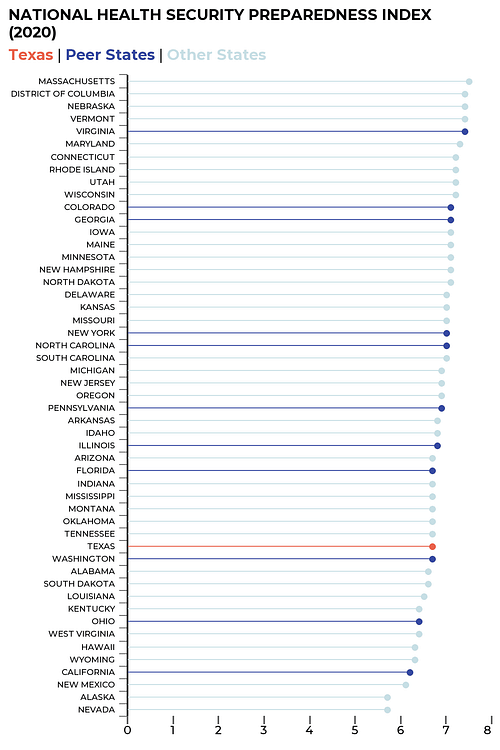Increasing confidence in government performance: Strategic Framework
This look at government performance is the sixth of our seven-part blog series, “Strategic Framework: 7 Key Findings,” which highlights some of the most compelling data from our new Strategic Framework.
POLICY AREA: Government Performance
Currently, long-term liabilities account for two-thirds of state obligations, and Texas’ state budget revenues rank fourth most volatile among its 12 peer states.
Public sector services must reliably address the challenges they are created to solve.
Well-administered government services — particularly in the areas of education, workforce development, justice and safety, health care, infrastructure, and natural resources — establish strong foundations for economic growth and prosperity.
Moreover, programs that address real problems increase confidence in government and reciprocal civic engagement. Unfortunately, only 36 percent of Texans believe our state is headed in the right direction, and Texas ranks near the bottom on voting rates in the last two election cycles.
Budgets should emphasize operational stability, invest in long-term needs and minimize liabilities.
 The state should ensure its revenue structure remains stable and sustainable for wise investments in Texas’ future. Volatile and variable revenue sources contribute to unstable budgeting environments, weakening the capacity to consistently fund key government services. Public expenditures should align with long-term needs, and all unfunded liabilities should be addressed responsibly.
The state should ensure its revenue structure remains stable and sustainable for wise investments in Texas’ future. Volatile and variable revenue sources contribute to unstable budgeting environments, weakening the capacity to consistently fund key government services. Public expenditures should align with long-term needs, and all unfunded liabilities should be addressed responsibly.
State government must prioritize advanced technologies, better data and a talented workforce to spur growth and innovation.
Antiquated information technology systems, insufficient data and high workforce turnover make the government less capable of providing core services and fixing real problems. State leaders can significantly improve services and accountability by investing in talent and funding proven, modern information technology, enhanced cybersecurity and better data and analytics.
Texas must be disaster-ready.
Texas is prone to a wide range of natural disasters, including hurricanes, tornadoes, floods, wildfires, drought, hail and severe storms. Disaster events threaten life, property, economic stability and natural resources. Therefore, Texas must also invest in crisis readiness to plan for increasingly likely natural disasters. The state is currently ranked ninth among peer states on an index of crisis preparedness.
Because metrics update frequently, please visit the Strategic Framework at framework.texas2036.org to view the most up-to-date trends.
